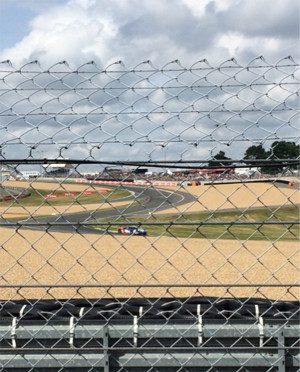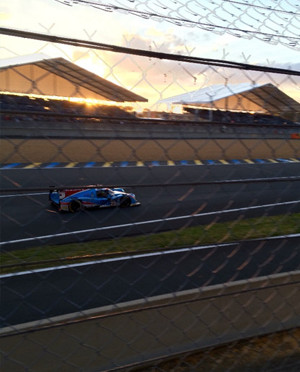Student Reports: Engineering in London, 2016
London Museum of Water and Steam
When planning my Engineering in London trip, family and friends often asked me, “Why London?” or “What do you gain from taking classes over there?” My response to those type of questions usually consisted of regurgitated variation of, “well, the industrial revolution began in London blah, blah, blah…” Before this trip, my understanding of London’s role in the industrial revolution was hardly deeper than that. As a mechanical engineering student, I was most excited for my thermodynamics coursework. While completing upper level engineering classes in a matter of weeks can be tough, the accelerated learning atmosphere was supplemented by the numerous engaging and educational trips we took as a group.
Of these, my personal favorite was our trip to the Kew Bridge Steam and Water Museum. First, I appreciated the water aspect of the museum, as water related issues are in many ways related to the sustainability issues I personally want to have a hand in solving. After the water exhibit came the main event. The steam portion of the museum featured some of the world’s oldest engines, with many of them still working. After weeks of discussing the development of thermodynamics and dissecting problems, it was rewarding to look at history and watch the massive engines do their thing. For me, the trip to Kew Bridge Steam and Water Museum was the perfect conclusion to the coursework.
– Drew Welch
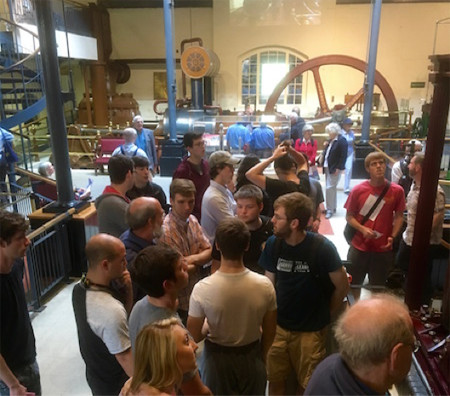
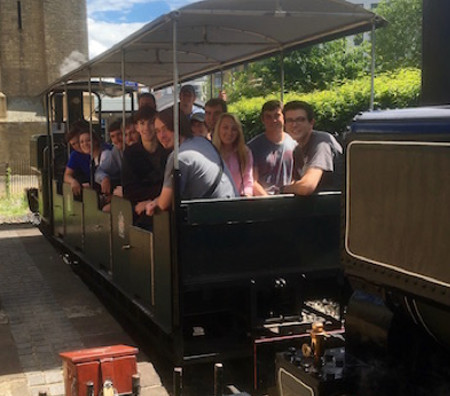
The British Museum and the Royal Institute
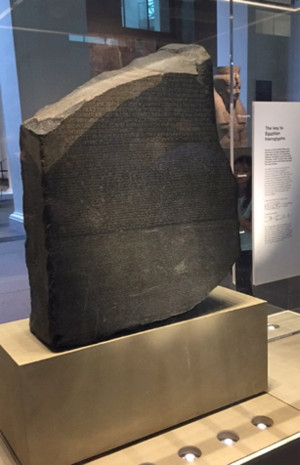
One of the greatest benefits of living and taking classes in Central London is how you are always in close proximity to something new and exciting. It just so happened that less than five minutes from our classrooms was a pretty impressive (and free) museum: the British Museum. Featuring artifacts and exhibits from all over the world where the British Empire once reigned (read: everywhere), the museum was entertainment enough for many after school visits. I personally made the quarter mile stroll from class to the museum at least three times, though I know other students allotted what must amount to days at the museum.
The exhibits at the museum themselves at first gave a nice break from engineering, as we spent a lot of time admiring the Rosetta Stone, Egyptian sculptures, Greek architecture, and even Native American tools. However, it didn’t take long for us engineering students to get back to the mechanical stuff, checking out the vast collection and history of the clocks, watches, and machines. After an hour or two in the museum each afternoon, we left feeling satisfied and ready to come back for another visit.
I’ll also take time to mention perhaps my favorite part of the trip: the lecture at the Royal Institute. We were lucky enough to watch one of the famous “Christmas Lectures” at the Royal Institute of England. The speaker was incredible and her vast knowledge was evident through her demonstrations; she even took the time to talk to me and answer my questions at the end! Overall, the British Museum and Royal Institute both enhanced my London experience in incredible and unexpected ways.
– Chris Haseler
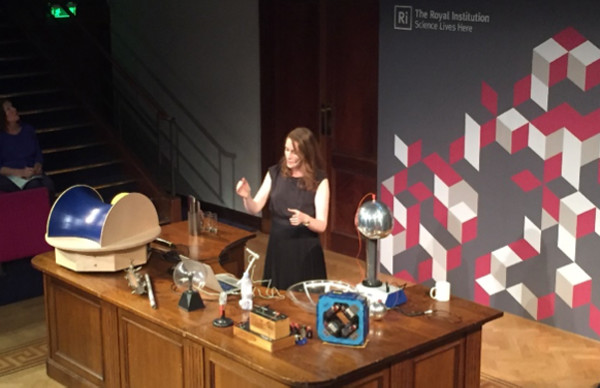
Thermodynamics Connections to London
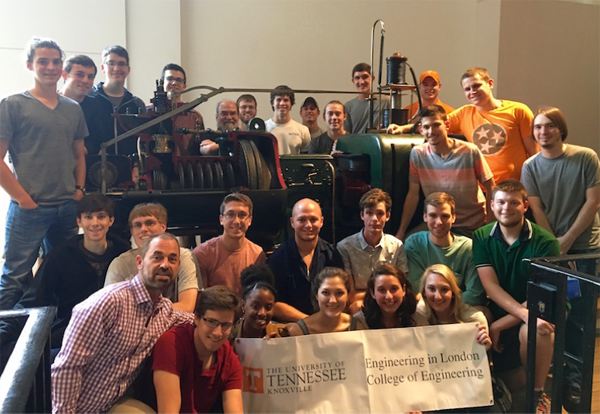
The Engineering in London program is amazingly unique in the way the itinerary complements the courses. London, England, was chosen because of its rich engineering history, and this program was cleverly crafted to take full advantage of that. England was at the heart of the industrial revolution and development of the steam engine that changed the world and gave birth to the field of mechanical engineering. For our course in thermodynamics, we learned about this history both in lecture and on class field trips around the London area.
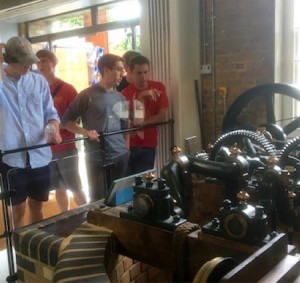
Between the science museum and the London Museum of Water and Steam, we got to experience the world’s oldest and most complete collection of antique steam engines. A few of these were operational, and we were fascinated watching the engine cycles we studied in class. We compared the enormous engines, noting many creative improvements since the original development by Thomas Newcomen in year 1712. It was here that we learned how engineering as we know it began! We are called “engineers” because the first in our field designed and made improvements to early steam engines. This gave me a sense of identity and better appreciation for my career.
– Chris Kelly
Circuits Connections to London
We only had one month to cover this mid to upper level engineering course, but we had the strong advantage of field trips to supplement our learning.
The most significant circuits connection to London/England is Bletchley Park. For those who do not know what Bletchley Park is, go watch The Imitation Game, like we did. Or, if you prefer not to watch an entire movie just to read a blog, I will tell you. Bletchley Park, historically, is where Alan Turing and Gordon Welchman designed the Bombe machine that broke the Nazi enigma code in World War II. Other machines were also designed and built here for similar purposes; chief among them is the Colossus, the first true programmable digital computer, which was used to break the Lorenz Code.
What was it like seeing these machines first hand? In short, amazing. The Colossus is so massive, you feel the heat as you enter the room. We were told to be extra careful as touching the wrong component (not that we were supposed to touch it anyway) would kill you, such was the voltage and power. Truly, it was impressive. But that’s just one machine. The park houses many other artifacts, including replica and original enigma code machines, which we saw and used first hand. These are the things that inspire and motivate people to become engineers.
Another circuits related trip was to the Royal Institute and the Faraday Laboratory in its basement. We explored the actual laboratory where Michael Faraday worked with and discovered many of the laws governing electricity and magnetism, including the foundations of modern circuitry.
– Ben Terry
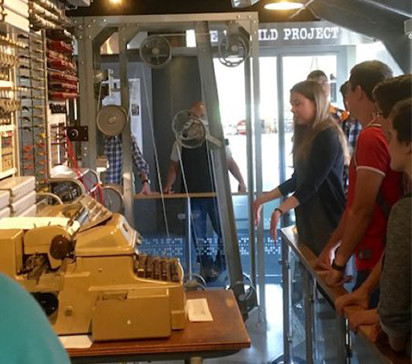
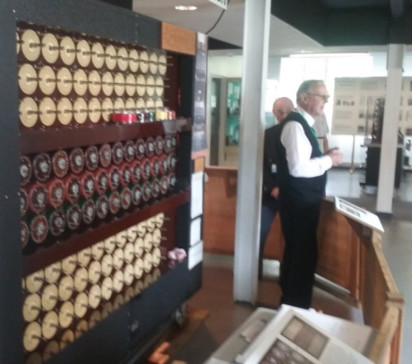
Weekend in Bruges
Our first week in London was incredible. And in class, we hit the ground running. But with five weeks in London, Caleb Peck and I knew we wanted to do some traveling. For a weekend trip, we decided on the medieval canal city of Bruges, Belgium, often called the Venice of the North. Caleb and I arrived late at night Friday by train, checked into our hostel and rested for the big day ahead.
In the morning we first took a tour around the city to gain our bearings. Afterward, the town was ours to discover. We climbed the Belfry tower and looked across the entire town. We rented bikes and saw the city on wheels – exploring side streets, windmills, and beautiful cathedrals. That night, we took a night tour of Bruges to see a different side of the city, and then our hostel was having a 30th birthday party! Some things you just can’t plan.
Sunday, we toured a brewery and after had some delicious Belgian waffles. And before we knew it, it was time to train to Brussels and London for another fantastic week of exploring and learning. All this wouldn’t be possible without the Engineering in London program, and most especially the College of Engineering Fellowship to make it more affordable and accessible for students and their families.
– Jake McCoy
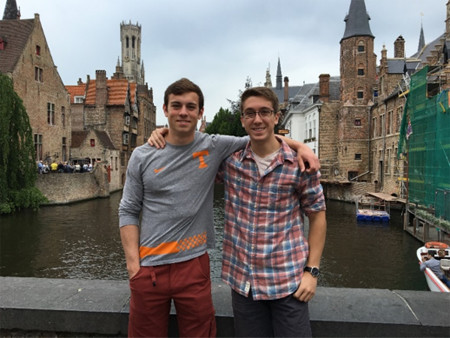
Le Mans Weekend Adventure
After getting off the train from Paris we hailed a cab to get us the rest of the way. Finally, we’ve made it to the track! Literal months of anticipation has led up to this event and we were finally there at one of the most historic races in motorsport. We had probably two hours or so before the race was going to start, so we walked around the village and looked in the shops. After some time perusing, we get to a spot to stand at, right at the edge of the pit lane. I will never forget the sound of the cars screaming by on their first fast lap. It was glorious, Connor and I looked at each other smiling from ear to ear. I couldn’t contain it!
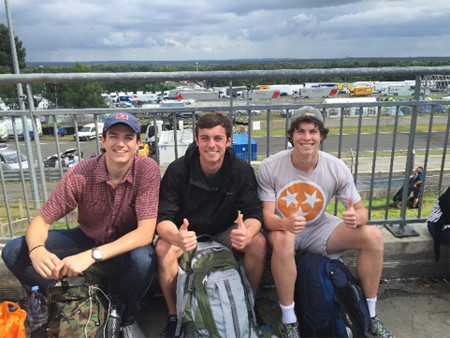
After some time, we decided to begin our maneuver around the track, which our general admission tickets allowed for us. The track has several famous corners that I wanted to be sure we could watch cars go by during some portion of the race. One corner in particular was Tertre Rouge. This was the last corner leading into the 12.6 kilometer straight known as the Mulsanne Straight. It was really fascinating to watch the cars glide along a smooth right hander, down a small straight, and then finally a right turn, pedal to the metal, and blast away down the French countryside.
Under the darkening skies we boarded a shuttle that took us down to the conclusion of the Mulsanne Straight, aptly named Mulsanne Corner. This was the corner at the top of my 24 Hours of Le Mans ‘bucket list’ as I had only dreamt of what it must be like to watch the cars scream down the straight, brake hard as they turn, and then shoot off again in a rage of horsepower. And I was surely not disappointed. It was in the dark of night by the time we got there which gave a fascinating aura to it. Watching the extremely fluorescent hues of green, yellow, and blue of the cars’ headlights as they go by was mesmerizing. We even saw a couple of cars off themselves from the track at this turn as the fatigue of the night and long racing can start to show.
It was a magical weekend full of awe-inspiring cars and bitter racing. The race hadn’t gone without its challenges though, as poorly marked shuttle signs and poor shuttles in general added to the stress of the lack of sleep we faced at two in the morning. But we knew every challenge we faced was part of the adventure we had been on and I wouldn’t trade anything in the world for the experience I had at Le Mans. Surely it is only fitting for a couple of mechanical engineering students and one aerospace engineering student to go to an event such as this for our long weekend. I believe motorsport is a shining example of engineering at its finest.
– Caleb Peck and Dean Blanks
